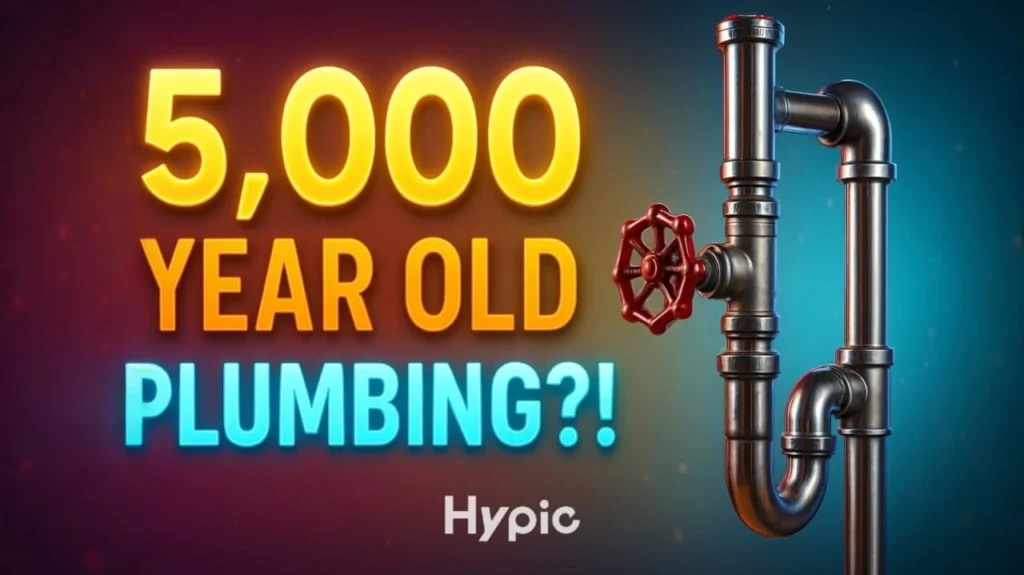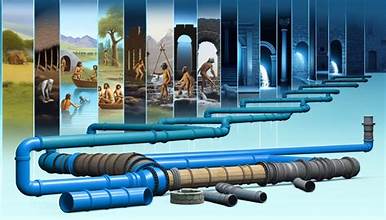
Hope you are fresh and fine, my brother/sister…
Have you ever sat on your toilet and wondered, “When was indoor plumbing invented?”
The truth is mind-blowing—this modern luxury actually began thousands of years ago. Let’s dive into the hidden history of indoor plumbing. Some facts will leave you shocked!
Ancient Civilizations and the Birth of Plumbing

Before you think plumbing is just a recent innovation, let’s rewind the clock… way back!
- Indus Valley Civilization (circa 2600 BCE) had advanced drainage systems and indoor toilets in cities like Mohenjo-daro.
- Ancient Egypt used copper pipes to build bathroom systems in pyramids for royalty.
- Minoans in Crete (around 2000 BCE) had flushing toilets and bathtubs. No joke!
This proves that ancient plumbing was far ahead of its time.
The Roman Empire and Advanced Plumbing
Now comes the real plumbing boom.
- Romans engineered aqua ducts that carried water over 50 miles to cities.
- Homes of the wealthy had indoor plumbing systems with toilets and baths.
- Public bathhouses had hot and cold running water—over 2,000 years ago!
The roman plumbing system was genius. They even used lead pipes (though later we found out lead wasn’t great for health).
For further reading please visit.
- Lost Legends: The Untold Story of Cowtown Ballroom Kansas City
- Entertainment in the 1960s: A Time of Groovy Change and Cultural Explosion
- 10 Fun Facts About Salsa Dance That’ll Make You Want to Hit the Floor!
The Fall of Rome and the Plumbing Decline
When Rome fell, so did much of its knowledge—including plumbing.
- Dark Ages (500–1400 AD): Indoor plumbing disappeared in most parts of Europe.
- People returned to chamber pots and outhouses.
- Sanitation dropped, and so did life expectancy.
This was a major step back in the evolution of indoor plumbing.
Indoor Plumbing in the Middle Ages
While Europe struggled, other parts of the world kept progressing.
- Islamic cities had public baths and running water systems.
- In China, palace complexes had ceramic pipes and toilets.
Still, early plumbing systems were rare for the average person.
Breakthroughs During the Renaissance
As learning returned, so did innovation.
- 1596: Sir John Harington invented a flush toilet for Queen Elizabeth I.
- 1700s: Cast iron pipes were used to transport water in some parts of France.
But here’s the twist—most homes still didn’t have indoor plumbing until much later.
Modern Indoor Plumbing: When It Finally Became Common
When did indoor plumbing start becoming “normal”? That’s the real question.
- 1800s: First indoor bathrooms appeared in rich homes in the U.S. and Europe.
- 1829: Tremont Hotel in Boston was one of the first with indoor plumbing.
- By the 1850s, cities like New York began building water systems for homes.
Still, many rural areas didn’t get indoor plumbing until the 20th century.
Indoor Plumbing in America
- By 1900, less than 10% of homes had indoor toilets.
- Post-WWII boom: Suburban homes were built with full bathrooms.
- By 1970s, nearly every American household had modern plumbing.
It took centuries for indoor plumbing invention date to turn into a global standard.
How Indoor Plumbing Changed Daily Life
Let’s be real—plumbing changed everything:
- Clean drinking water improved health.
- Sewage removal reduced disease.
- Daily comfort increased like never before.
Imagine life without flushing toilets, hot showers, or washing machines. No thanks!
Conclusion
The next time someone asks, “Who invented indoor plumbing?” you’ll know it wasn’t a person—it was a timeline built by many civilizations.
From ancient Mesopotamians to modern-day engineers, this journey changed the way we live.
So, whenever you flush… give thanks to history!
FAQ Section
1. When did indoor plumbing start in the United States?
Indoor plumbing became more common in U.S. cities in the mid-1800s. Rural areas followed in the 20th century.
2. Did the Romans have indoor plumbing?
Yes! Wealthy Roman homes had toilets, baths, and running water through lead pipes.
3. Who invented the first flush toilet?
Sir John Harington created one in 1596 for Queen Elizabeth I, though it didn’t become popular for centuries.
4. Why did plumbing decline after the Roman Empire?
When Rome fell, its engineering knowledge was lost, and sanitation systems collapsed.
5. Is indoor plumbing still improving today?
Absolutely. Smart toilets, water-saving systems, and eco-friendly plumbing continue to evolve.
Call to Action
Did this article blow your mind?
Then don’t keep it to yourself!
💬 Share it with your friends
🔔 Bookmark for later
🧠 Explore more wild facts on our History & Culture page!







